
How to Use LED Two Pin (Blue) : Examples, Pinouts, and Specs
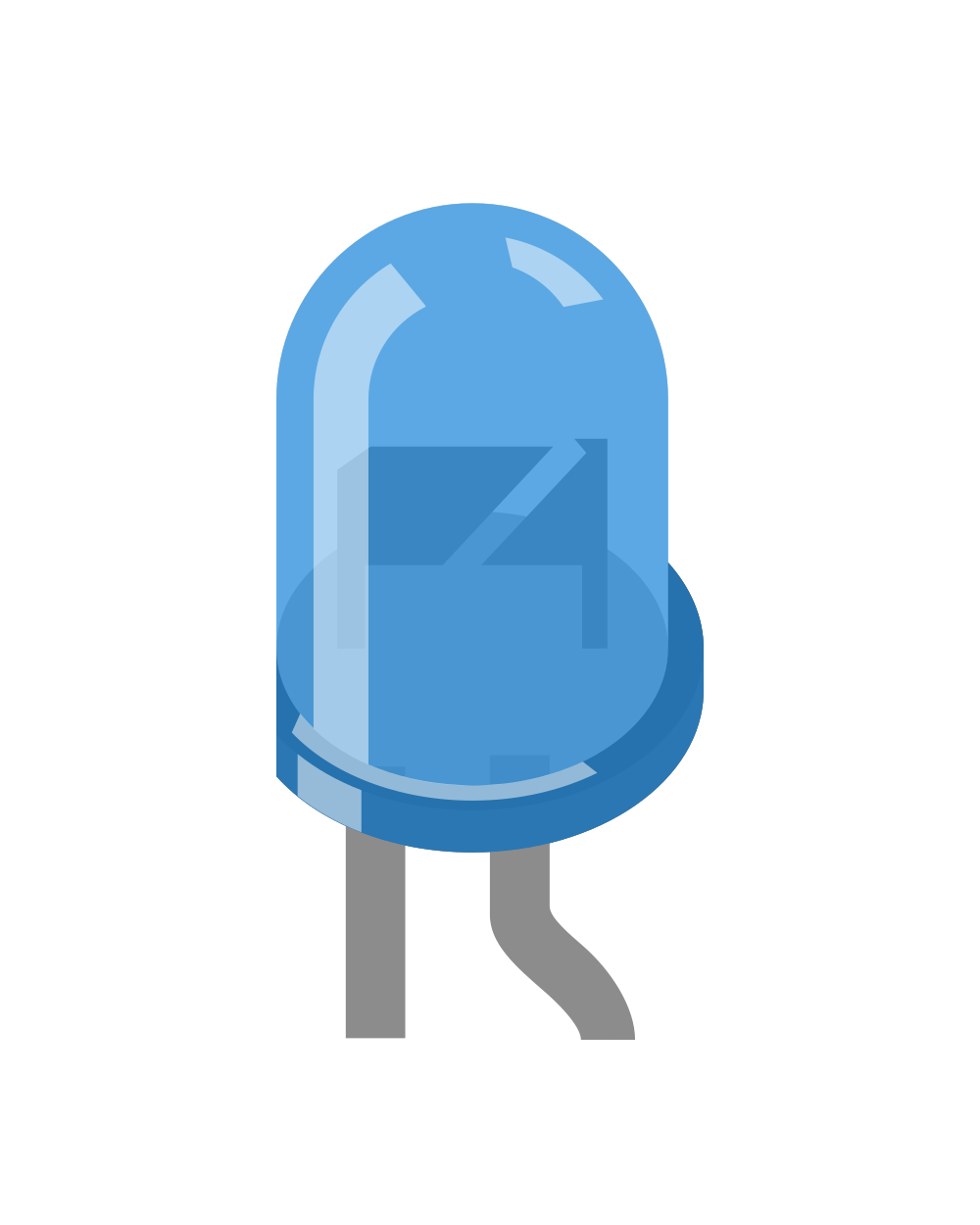
 Design with LED Two Pin (Blue) in Cirkit Designer
Design with LED Two Pin (Blue) in Cirkit DesignerIntroduction
A two-pin light-emitting diode (LED) is a semiconductor device that emits blue light when an electric current flows through it. This component is widely used in electronic circuits for visual indicators, status displays, and decorative lighting. The blue LED is particularly popular in modern electronics due to its vibrant color and energy efficiency.
Explore Projects Built with LED Two Pin (Blue)
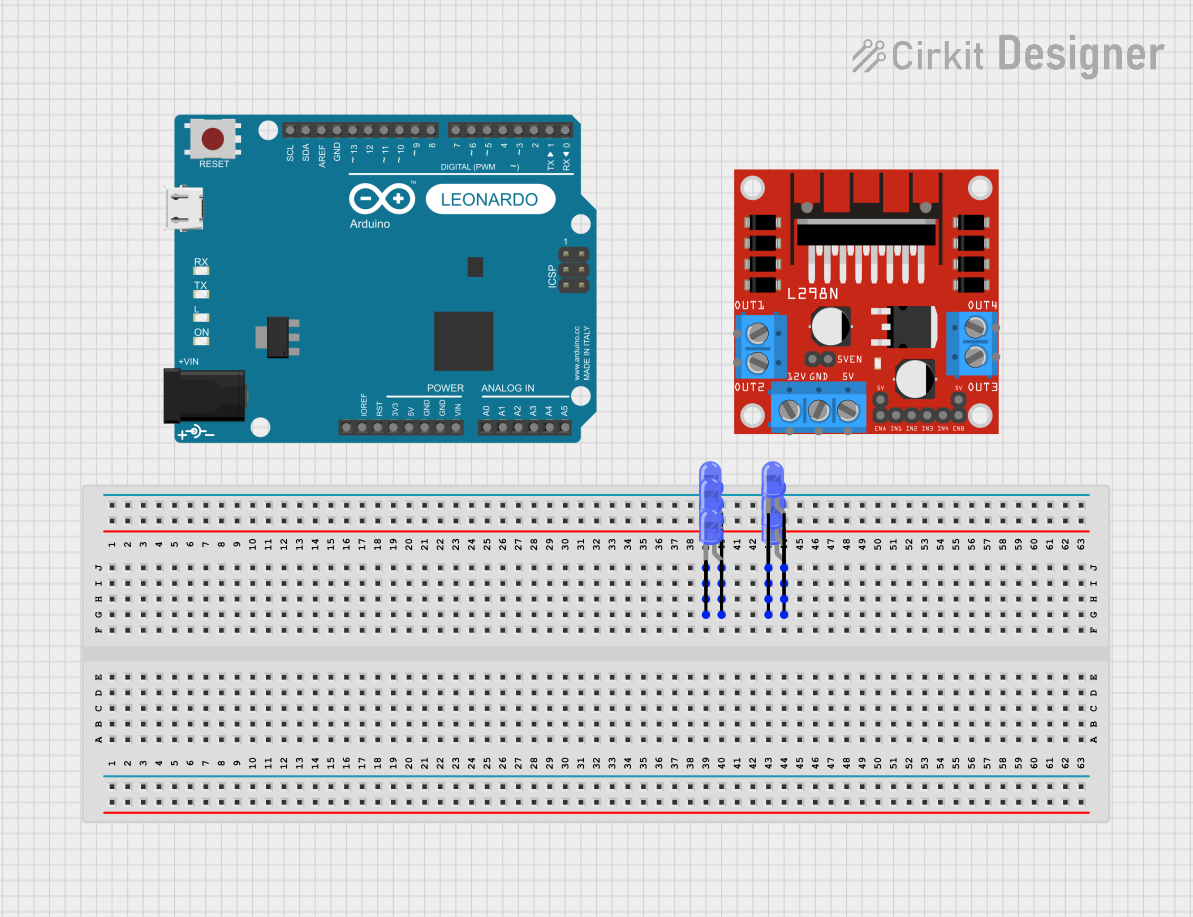
 Open Project in Cirkit Designer
Open Project in Cirkit Designer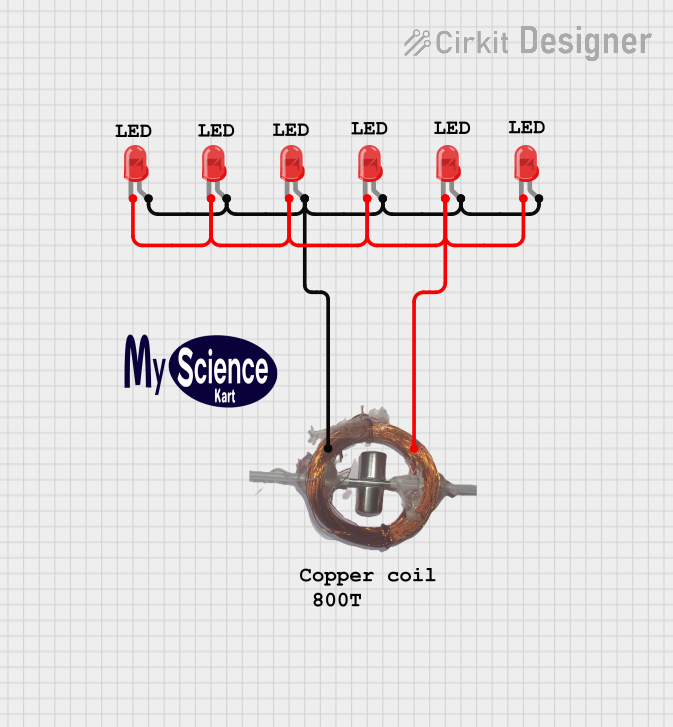
 Open Project in Cirkit Designer
Open Project in Cirkit Designer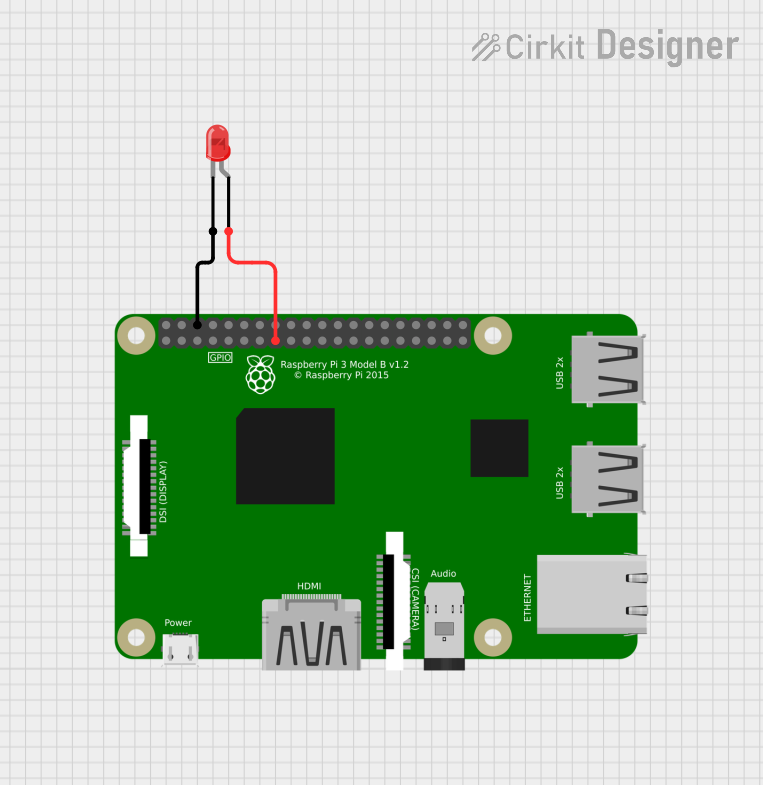
 Open Project in Cirkit Designer
Open Project in Cirkit Designer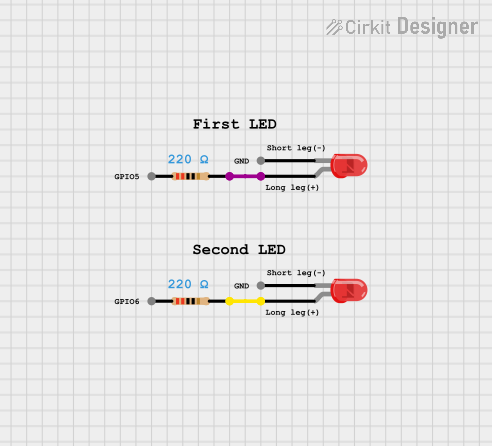
 Open Project in Cirkit Designer
Open Project in Cirkit DesignerExplore Projects Built with LED Two Pin (Blue)

 Open Project in Cirkit Designer
Open Project in Cirkit Designer
 Open Project in Cirkit Designer
Open Project in Cirkit Designer
 Open Project in Cirkit Designer
Open Project in Cirkit Designer
 Open Project in Cirkit Designer
Open Project in Cirkit DesignerCommon Applications
- Power and status indicators in electronic devices
- Backlighting for displays and keypads
- Decorative and ambient lighting
- Signal indicators in circuits
- Educational and DIY electronics projects
Technical Specifications
Below are the key technical details for the blue two-pin LED:
| Parameter | Value |
|---|---|
| Forward Voltage (Vf) | 2.8V to 3.6V |
| Forward Current (If) | 20mA (typical), 30mA (maximum) |
| Reverse Voltage (Vr) | 5V (maximum) |
| Wavelength | 450nm to 495nm (blue light range) |
| Power Dissipation | 75mW (maximum) |
| Viewing Angle | 20° to 30° |
| Operating Temperature | -40°C to +85°C |
Pin Configuration
The blue two-pin LED has two terminals:
| Pin | Description |
|---|---|
| Anode (+) | The longer leg of the LED. Connect this to the positive terminal of the circuit. |
| Cathode (-) | The shorter leg of the LED. Connect this to the negative terminal or ground. |
Note: If the legs are trimmed or indistinguishable, the flat edge on the LED casing indicates the cathode.
Usage Instructions
How to Use the LED in a Circuit
Determine the Resistor Value: To prevent damage, always use a current-limiting resistor in series with the LED. Calculate the resistor value using Ohm's Law: [ R = \frac{V_{supply} - V_f}{I_f} ] Where:
- ( V_{supply} ) is the supply voltage
- ( V_f ) is the forward voltage of the LED
- ( I_f ) is the desired forward current (typically 20mA)
For example, with a 5V supply and a forward voltage of 3.0V: [ R = \frac{5V - 3.0V}{0.02A} = 100\Omega ]
Connect the LED:
- Connect the anode (+) to the positive terminal of the power supply through the resistor.
- Connect the cathode (-) to the ground.
Power the Circuit: Once connected, the LED will emit blue light when powered.
Important Considerations
- Polarity: LEDs are polarized components. Reversing the polarity may damage the LED.
- Current Limiting: Always use a resistor to limit the current. Exceeding the maximum current rating can permanently damage the LED.
- Heat Management: While LEDs are efficient, excessive current can cause overheating. Ensure proper current regulation.
Example: Connecting to an Arduino UNO
The blue LED can be easily interfaced with an Arduino UNO for various projects. Below is an example of blinking the LED:
Circuit Setup
- Connect the anode (+) of the LED to Arduino digital pin 13 through a 220Ω resistor.
- Connect the cathode (-) of the LED to the Arduino GND pin.
Code Example
// Arduino code to blink a blue LED connected to pin 13
void setup() {
pinMode(13, OUTPUT); // Set pin 13 as an output
}
void loop() {
digitalWrite(13, HIGH); // Turn the LED on
delay(1000); // Wait for 1 second
digitalWrite(13, LOW); // Turn the LED off
delay(1000); // Wait for 1 second
}
Note: Adjust the resistor value based on the supply voltage and LED specifications.
Troubleshooting and FAQs
Common Issues
LED Does Not Light Up:
Cause: Incorrect polarity.
Solution: Ensure the anode is connected to the positive terminal and the cathode to ground.
Cause: No current-limiting resistor or incorrect resistor value.
Solution: Verify the resistor value and connections.
LED Flickers or is Dim:
- Cause: Insufficient current or loose connections.
- Solution: Check the resistor value and ensure all connections are secure.
LED Burns Out Quickly:
- Cause: Excessive current.
- Solution: Use a proper current-limiting resistor to prevent overcurrent.
FAQs
Q: Can I connect the LED directly to a 5V power supply?
A: No, always use a current-limiting resistor to prevent damage to the LED.Q: How do I identify the anode and cathode if the legs are trimmed?
A: Look for the flat edge on the LED casing, which indicates the cathode (-).Q: Can I use the LED with a 3.3V power supply?
A: Yes, but ensure the resistor value is calculated for the 3.3V supply.Q: What happens if I exceed the maximum forward current?
A: The LED may overheat and fail permanently. Always stay within the recommended current range.
By following this documentation, you can effectively use the blue two-pin LED in your electronic projects while ensuring optimal performance and longevity.